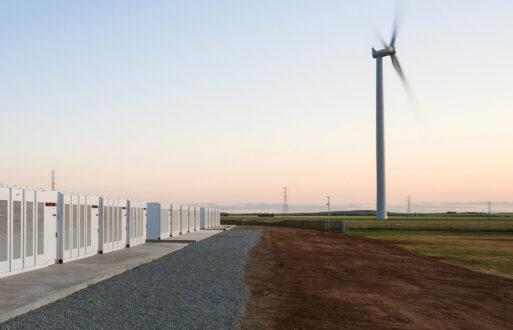Remember the “square peg/round hole” scene in the movie Apollo 13?
“We gotta find a way to make this fit into the hole for this using nothing but that.”
The lesson?
Duct tape.
Don’t leave earth without it.
Like those engineers at mission control, GENCO portfolio managers often feel like they’re trying to fit a square peg into a round hole. And, even though they may not be facing the exact challenge of the Apollo 13 engineers in 1970, they do share the goal of reducing CO2 and a variety of other pollutants as part of a massively complex and ongoing optimization process.
In part three of the blog series, “7 Habits of Highly Effective GENCOs”, PCI reviewed some of the many challenges in optimizing increasingly complex GENCO asset portfolios and how such challenges impact real-time to long-range planning and decision-making.
Things don’t get any easier given the constant evolution in Unit Commitment and Economic Dispatch (UCED), which involves some of the thorniest math and software processing firepower used in the energy business.
This fourth post in our series examines GENCO compliance with environmental standards described in the Cross-State Air Pollution Rule (CSAPR) and how its rules necessarily complicate the UCED equation with critical variables and inputs.
Cleaning Up Our Act
The CSAPR is a market-based program designed to achieve emission reductions from fossil fuels, notably for sulfur dioxide (SO2) and nitrogen oxide (NOX). One of the chief aims of the CSAPR is to help reduce carbon at the lowest possible cost.
The “ozone season” for programs like the CSAPR is May 1 to September 30, the warmer summer months when ground level concentrations are at their apex.

The CSAPR program has been a great success, with GENCO compliance reaching 99.9%. Most significantly, SO2 and NOX output has dropped dramatically, but there is still a long way to go.
$75 Billion (and counting)
Since the inception of CSAPR in 2011, GENCOs have spent approximately $75 billion to comply with its mandates. In a world deluged by daily monetary news throwing around staggering dollar figures, that is still an impressive chunk of change.
If your company is in one of the 23 CSAPR-impacted states, air emissions, and their associated costs are major considerations that will strongly affect the effectiveness and profitability of your power trading and risk management strategies.
The Holy Grail & the Four Constraints
Correctly identifying the loading level of each unit, such that total generation equals demand and total generation cost is minimized, is the “holy grail” sought by the portfolio manager.
Physical constraints are enforced during studies that assume optimization occurs at a point where the marginal cost of supply equals the marginal cost of demand.
Let’s touch on four of the primary constraint categories.
1. Operational
The ability to accurately assess the health and performance capabilities of a power plant will identify important constraints for any model.
- Minimum up and down time
- Multi-point non-linear incremental heat rates
- Ramp rates
- High and low dispatch limits
- Reserve capabilities
- Emission characteristics
The operating characteristics of a power plant represent constraints in modeling and will impact NOX emissions, as will the plant’s incremental heat rate curve.
2. Fuel Contracts
Fuel contracts contain critical information about sulfur content and help answer key questions such as:
- What is the sulfur content of the fuel?
- What portion of the fuel’s sulfur content is released into the air?
Answers to these and other fuel data concerns are used to understand the amount of SO2 emissions generated under different scenarios.
3. Safety
Power plants are dangerous places to work, with extremely detailed safety standards and procedures designed to protect workers. Safety constraints on operating power plants are significant inputs in the GENCO asset/portfolio modeling exercise.
4. Long-Term Service Agreements
The age of renewable energy has put more pressure on power plants to ramp up and down faster, which has also increased concerns about the health and longevity of some generation facilities. As the generation landscape continues to evolve – and quickly – some analysts liken increasing the demands on certain plants to asking a dump truck to drive like a Ferrari.
Long-Term Service Agreements (LTSAs) are weighty documents describing in breathtaking detail the operational constraints imposed on a power plant. Portfolio managers must understand them all as they represent (a) critical constraints for reliable plant operations and (b) major inputs in accurate modeling over various time horizons.

LTSAs are customizable but generally have a basic structure and many elements that translate to constraints in GENCO portfolio modeling.
Operational, contracted fuel, safety, and LTSA-imposed constraints are loaded into our model to study performance across key time horizons. These include hourly and daily scenarios to weekly and seasonal ones. Different limits need to be set for different units under different scenarios to help ensure our discovery of the holy grail.
The Importance of Accurate Load & Price Forecasting
It’s quite easy to get deep into the proverbial weeds when it comes to properly modeling constraints and emission economics. So, let’s take a step back from the plant by reminding ourselves of the critical nature that accurate load and price forecasting play in effective UCED and portfolio planning.
Before we can understand the optimal time to run our power plants between the May through September ozone season, we need a confident view of load shape and size, as well as market prices.
As it almost always does, a UCED model relies heavily on accurate load and price forecasting. The former includes (and is complicated by) rapidly changing load profiles of residential and commercial consumers, while the latter includes both Locational Marginal Prices (LMPs) and emission allowance prices.
Conclusion: Get the Best Optimization Platform Possible
Concerns over pollutants and climate, along with technological innovation, are converging to advance hopes of meeting world energy demand reliably, optimally, and in a manner that preserves our environment. Until we can confidently declare “mission accomplished,” it is paramount that GENCOs be as thorough and sophisticated as possible in optimizing operations to mitigate adverse impacts on the only home that we have.
PCI’s GenTrader platform has been the industry standard since before the RTO/ISO markets launched and still is, enabling power generation companies to more effectively compete ( inside or outside of markets).
GenTrader’s environmental compliance modeling capabilities allow GENCOs to optimally serve load as renewable energy sources continue to play a larger role and eventually take center stage.






